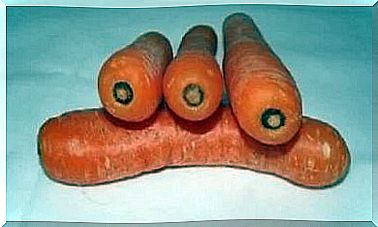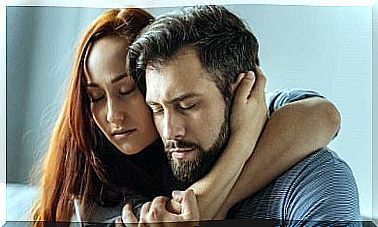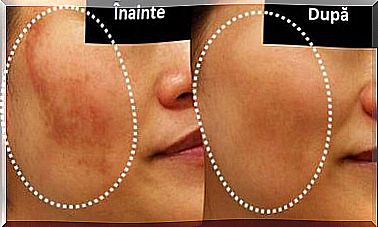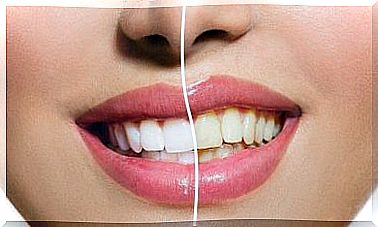Osteoarthritis Of The Spine: Symptoms And Treatment
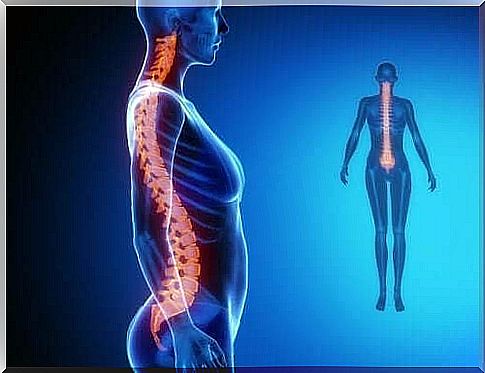
Osteoarthritis of the spine consists of the degradation of a part of the intervertebral discs called the nucleus pulposus. Because of this, the intervertebral discs lose their thickness and density. At the root of the problem is wear and tear.
The evolution of spinal osteoarthritis
When we are young, the intervertebral discs are thick and have a gelatinous consistency. However, as the years go by, they become dehydrated and decrease in height due to changes in the composition of the nucleus pulposus structure.
The first signs of osteoarthritis of the spine can be seen on x-rays from the age of 30-40. This problem begins to be felt at a certain level of the spine and can cause pain.
The ability of the intervertebral discs to absorb shocks decreases when they wear out. The vertebrae need to support more weight and the bone tissue grows, which leads to the formation of osteophytes (also called bone spurs), which can stick to the adjacent vertebrae.
Osteophytes cause problems only if they produce spinal stenosis or compress the nerves. This process and how it progresses are influenced by genetic, nutritional, traumatic and mechanical factors.
80% of the population experience back pain at some point and all adults past a certain age have symptoms of intervertebral disc degradation.
Risk factors for osteoarthritis of the spine
Several scientific studies have shown that:
- Overweight does not accelerate the degradation of intervertebral discs. On the contrary, a gradual increase in body weight of up to 11.8 kilograms can slow down the process. But experts do not yet know what the effect of a higher weight gain is.
- Smoking has a negative impact on the spine.
- Carrying heavy objects has a minimal impact on degeneration.
- Genetic inheritance is the main factor when it comes to the degradation of intervertebral discs.
Symptoms of spinal osteoarthritis
Here are some of the main symptoms of osteoarthritis of the spine:
- Recurrent low back pain
- Stiffness in the back in the morning (this symptom improves during the day and decreases with movement)
- Low back pain radiating to the buttocks, thighs and pelvic region
- Weakening of the legs
- Cervical pain and stiffness
- Limited mobility of the spine and inability to bend or walk
As the intervertebral discs wear out, the muscles need to work harder and harder to support the spine and maintain balance during movement. If the muscles are strong enough and the muscle groups are well coordinated, they can withstand the excessive effort.
But the researchers found no correlation between the degree of wear of the intervertebral discs and the pain experienced. The more developed the muscles, the weaker the direct relationship between these factors. Therefore, some patients with advanced degradation do not experience pain at all because they have strong muscles.
Diagnosis of spinal osteoarthritis
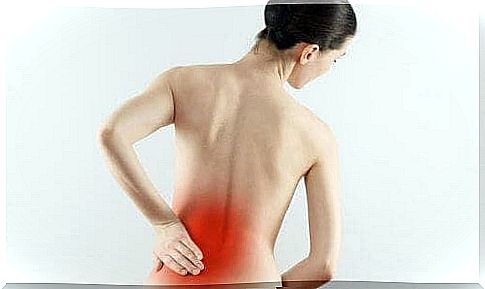
Doctors diagnose osteoarthritis of the spine if the patient has symptoms such as pain, stiffness and difficulty moving. At the same time, specialists will consider radiographs in the case of those who report pain and reduced mobility in the lumbar region. In fact, most patients will need an X-ray.
Types of treatment for osteoarthritis of the spine
The goal of treatment is to relieve pain and improve the patient’s quality of life. There are several useful alternatives in this regard, such as physiotherapy, medications and surgery.
Drug treatment consists of the administration of analgesics such as acetaminophen. If it does not work, patients can combine it with anti-inflammatory drugs. Patients who cannot take such medications may opt for opioid analgesics such as tramadol.
People with severe osteoarthritis are at risk of developing neurological complications. In these cases, due to nerve compression or spinal stenosis, drugs such as pregabalin or gabapentin are recommended.
Last but not least, the advice and treatments offered by physiotherapists can be very useful. The symptoms of osteoarthritis of the spine can be alleviated by combining all the options presented above.

